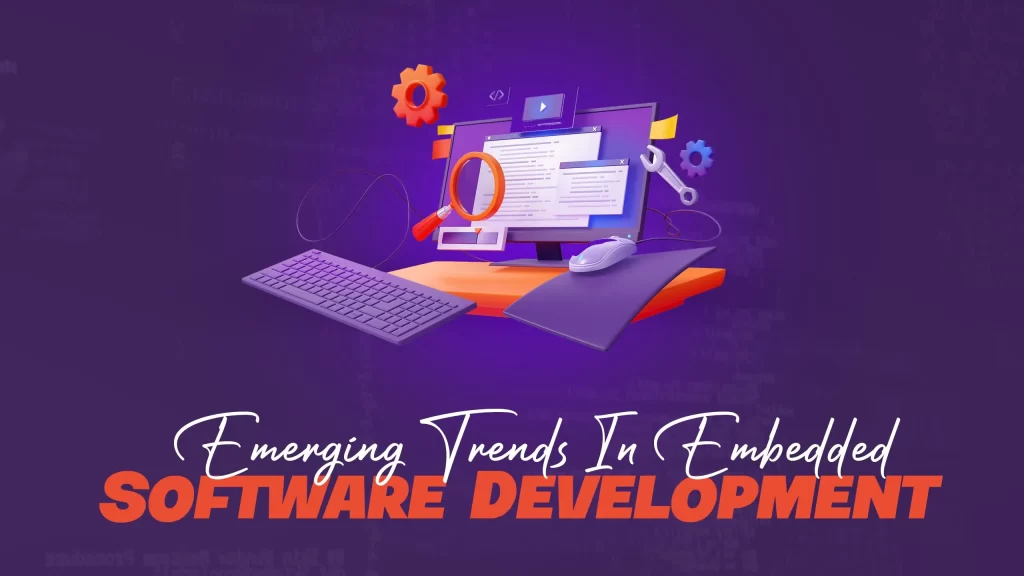
In the ever-evolving landscape of technology, embedded systems play a pivotal role in shaping the way we interact with the world around us. Embedded software development is at the forefront of innovation, influencing everything from smart appliances to critical systems in healthcare and transportation. As we delve into the heart of 2024, several emerging trends are reshaping the field, promising to revolutionize how developers approach embedded software.
1. Edge Computing and Embedded Systems
Edge computing has emerged as a transformative paradigm in computing, and its integration with embedded systems is becoming increasingly prevalent. The shift from traditional cloud-based processing to edge computing brings computation closer to the data source, reducing latency and enhancing real-time processing capabilities. Embedded systems, equipped with powerful processors and optimized algorithms, are pivotal in enabling efficient edge computing applications.
Edge-based embedded systems are gaining prominence in scenarios where low-latency processing is critical, such as autonomous vehicles, industrial automation, and smart cities. The fusion of edge computing and embedded systems opens new possibilities for applications that demand rapid decision-making and instant response times.
2. AI and Machine Learning Integration
Artificial intelligence (AI) and machine learning (ML) are reshaping embedded software development, pushing the boundaries of what embedded systems can achieve. AI-powered embedded systems can adapt, learn, and make intelligent decisions based on data, leading to enhanced functionality and efficiency. From smart cameras that recognize objects to edge devices capable of natural language processing, the integration of AI into embedded systems is revolutionizing industries.
Developers are leveraging machine learning frameworks to train models and deploy them on resource-constrained embedded devices. This trend not only enhances the intelligence of devices but also enables them to learn and evolve over time, making them more adaptable to changing requirements and environments.
3. Security-First Approach
As embedded systems become integral to critical infrastructure and IoT ecosystems, the need for robust security measures has never been more crucial. Security vulnerabilities in embedded software can have far-reaching consequences, from compromising personal privacy to endangering public safety. In 2024, the emphasis on a security-first approach is guiding embedded software developers to implement stringent security measures from the initial stages of development.
Developers are incorporating secure coding practices, utilizing encryption technologies, and implementing secure boot mechanisms to protect embedded systems from cyber threats. Additionally, the ongoing development of industry standards and best practices ensures that security remains a top priority in the ever-expanding realm of embedded software.
4. RTOS and Real-Time Systems
Real-Time Operating Systems (RTOS) are witnessing increased adoption in embedded software development, especially in applications where timing precision is paramount. Industries such as automotive, aerospace, and healthcare rely on embedded systems that can deliver real-time responses. RTOS provides the necessary framework for deterministic execution, ensuring that tasks are completed within specified time constraints.
Developers are leveraging RTOS to enhance the predictability and reliability of embedded systems. This trend is particularly evident in safety-critical applications, where the ability to respond to events in real-time is not just a convenience but a necessity for preventing catastrophic failures.
5. Containerization for Embedded Systems
Containerization, popularized by technologies like Docker, is making its mark in embedded software development. This approach involves encapsulating an application and its dependencies in a lightweight, portable container. The containerized applications can then run consistently across different environments, providing a more streamlined deployment process for embedded systems.
Developers are embracing containerization to overcome challenges related to compatibility and scalability in embedded software. Containers offer a modular and efficient way to package and deploy applications, simplifying the development and maintenance of complex embedded systems. This trend not only improves the efficiency of software deployment but also facilitates easier updates and maintenance of embedded applications.
6. Open Source Collaboration
Open source collaboration has become a driving force in embedded software development, fostering innovation and accelerating the pace of development. Communities centered around open source embedded platforms, tools, and frameworks provide developers with a wealth of resources and collective expertise. This collaborative approach encourages the sharing of knowledge, code, and best practices, contributing to the growth and maturation of the embedded software ecosystem.
Developers are actively participating in open source projects to leverage shared solutions, contribute improvements, and collaborate with peers in the field. This trend not only accelerates development but also ensures that embedded software benefits from a diverse range of perspectives and experiences.
Conclusion
As we navigate the dynamic landscape of embedded software development in 2024, these emerging trends are shaping the future of connected devices and systems. From the integration of AI and machine learning to a security-first approach, developers are pioneering innovations that will redefine how we interact with technology. As embedded systems continue to evolve, staying informed and adapting to these trends will be essential for those seeking to create the next generation of intelligent, secure, and efficient embedded applications.
